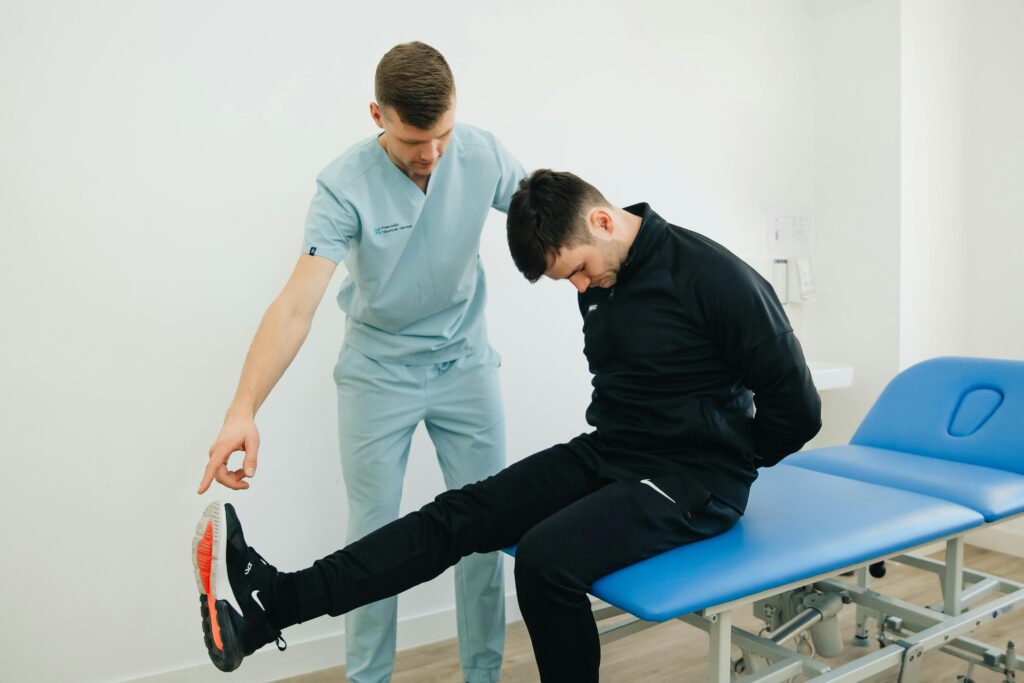Sciatica is a condition that affects many individuals, causing significant discomfort and impacting daily life. As a spine surgeon, I frequently encounter patients suffering from sciatica, and I believe it’s crucial to understand this condition better, including its causes, symptoms, diagnosis, and treatment options.
What is Sciatica?
Sciatica refers to pain that radiates along the path of the sciatic nerve, which runs from the lower back through the hips and buttocks and down each leg. This nerve is the largest in the body, and sciatica typically occurs when the nerve is compressed or irritated.

Common Symptoms of Sciatica
Patients with sciatica often report:
- Pain: This may be sharp, burning, or shooting pain that can travel down the leg.
- Numbness or Tingling: Affected individuals may experience a pins-and-needles sensation in the leg or foot.
- Muscle Weakness: Some may notice weakness in the affected leg, making it difficult to move or control.
It’s important to differentiate sciatica from general back pain, as sciatica specifically involves nerve root involvement, often leading to more pronounced symptoms.
Causes of Sciatica
Several conditions can lead to sciatica, including:
- Herniated Discs: The most common cause, where the inner gel of the disc bulges out, pressing on the sciatic nerve.
- Spinal Stenosis: Narrowing of the spinal canal can compress nerve roots.
- Spondylolisthesis: A condition where one vertebra slips forward over another, potentially pinching nerves.
- Piriformis Syndrome: The piriformis muscle can irritate the sciatic nerve, leading to symptoms.
- Injuries or Tumors: Rarely, injuries or tumors can cause nerve compression.
Risk Factors
Certain factors may increase the likelihood of developing sciatica:
- Age: Individuals between 30 and 50 are more prone to sciatica.
- Occupation: Jobs that require heavy lifting or prolonged sitting can contribute.
- Physical Inactivity: A sedentary lifestyle can weaken muscles and exacerbate symptoms.
- Obesity: Excess weight can place additional strain on the spine.
Diagnosis of Sciatica
Diagnosing sciatica involves a thorough medical history and physical examination. Key components include:
- Patient History: Understanding the onset, duration, and nature of symptoms.
- Physical Examination: Tests such as the straight leg raise can help identify nerve root irritation.
- Imaging Studies: In some cases, MRI or CT scans may be necessary to visualize the spine and identify underlying issues.
Treatment Options for Sciatica
Conservative Management
Most cases of sciatica resolve with conservative treatment. Options include:
- Physical Therapy: Tailored exercises can strengthen the back and improve flexibility.
- Medications: Over-the-counter nonsteroidal anti-inflammatory drugs (NSAIDs) can help manage pain and inflammation.
- Heat and Ice Therapy: Applying heat or ice can reduce pain and swelling.
Advanced Treatments
If conservative measures fail, more advanced treatments may be considered:
- Corticosteroid Injections: These can reduce inflammation around the nerve roots.
- Surgery: In severe cases, surgical options such as discectomy or laminectomy may be necessary to relieve pressure on the sciatic nerve.
Preventing Sciatica
Prevention is key. Here are some strategies to help reduce the risk of developing sciatica:
- Maintain a Healthy Weight: Keeping your weight in check can reduce strain on your spine.
- Stay Active: Regular exercise strengthens muscles and improves flexibility.
- Practice Good Posture: Proper posture while sitting and standing can alleviate stress on the spine.
- Use Proper Lifting Techniques: When lifting heavy objects, use your legs instead of your back.
When to See a Doctor
If you experience persistent pain, worsening symptoms, or loss of bowel or bladder control, it’s essential to seek medical attention promptly. These may indicate serious conditions requiring immediate intervention.
Conclusion
Understanding sciatica is crucial for effective management and treatment. As a spine surgeon at Bangalore Spine Specialist Clinic, I emphasize the importance of early diagnosis and a comprehensive treatment plan tailored to each patient’s needs. If you or someone you know is struggling with sciatica, don’t hesitate to reach out for a consultation.
